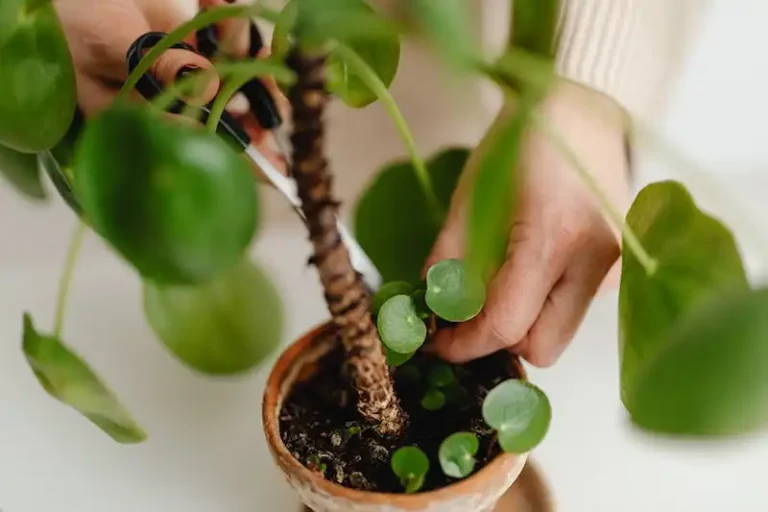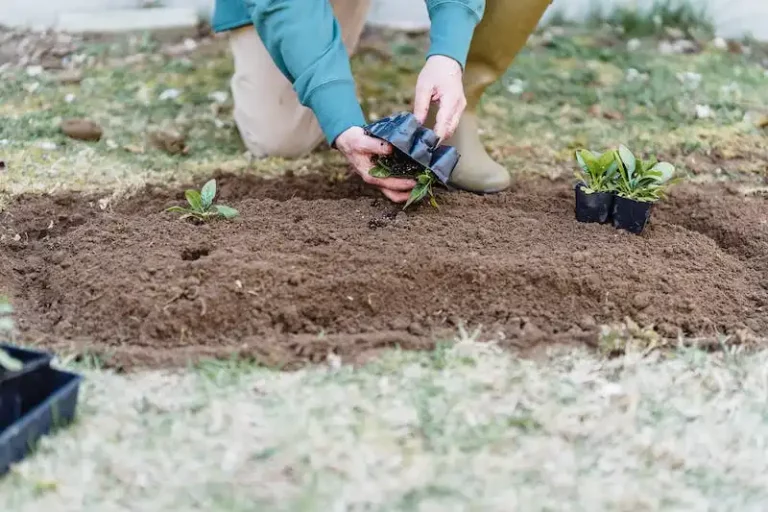Heather plants, also known as Calluna vulgaris, are gray-green evergreens that produce clusters of small, delicate flowers in a wide range of colors. These flowering shrubs are native to regions with harsh conditions, such as moors and dale, and are well-suited for growing in zones 4-6.
One interesting fact about heather plants is that they have a unique root system that allows them to easily grow in poor soils, like those found in their natural habitat. They prefer acidic soils with a pH between 4.5 and 5.5, and can tolerate a range of soil types, including sandy or clay soils. However, they do best in well-draining soils.
If you’re considering growing heather plants in your landscaping, there are a few things you should know. First, heather plants are typically grown from cultivars, which are specially bred varieties that have been selected for their specific characteristics, such as flower color or growth habit. There are many different cultivars to choose from, so you can find one that suits your taste and needs.
When planting heather, it’s important to give them plenty of space to grow. Heather plants have a spreading habit and can quickly form mats that cover the ground. They should be spaced about 12-18 inches apart to allow for proper air circulation and prevent overcrowding. If you’re planting multiple heather plants, it’s a good idea to mix in some other low-growing evergreens, such as juniper or creeping thyme, to add variety to your planting.
Heather plants are relatively low-maintenance and don’t require much pruning. However, if you notice any dead or damaged branches, you can prune them back to keep the plant looking tidy. Pruning should be done in early spring, before new growth starts. To promote a dense habit and more vibrant flowering, you can also lightly prune the tips of the branches after flowering.
Heather plants have specific watering needs, and it’s important to water them consistently. They prefer moist soil but do not like to be waterlogged, so it’s important to find the right balance. Water the plants deeply and allow the soil to dry out slightly between waterings. It’s also a good idea to water heather plants in the morning or early afternoon, so any excess moisture on the leaves can dry before evening.
In addition to watering, heather plants also benefit from a regular feeding schedule. They have a relatively low nutrient requirement, so a light application of a balanced fertiliser in early spring and late summer is usually sufficient. Avoid using fertilisers that contain high levels of nitrogen, as this can promote excessive foliage growth at the expense of flowering.
Heather plants are a beautiful addition to any garden, providing year-round interest with their evergreen foliage and colorful flowers. With their ability to thrive in poor soils and their low-maintenance requirements, they are a great choice for both beginner and experienced gardeners.
Remember to check with your local nursery or gardening center for specific advice for your region, as growing conditions can vary. If you’re unsure about the acidity of your soil, you can test it using a pH testing kit. Overall, heather plants are a versatile and attractive option for any garden.
Source: How to Plant, Grow and Care for Heather Plants. Retrieved from [источник]
Growing Heather: How To Care For Heather
If you are looking for a low-maintenance and beautiful addition to your garden, heather plants are an excellent choice. Their vibrant colors and delicate flowers can easily brighten up any landscape. Here, we will provide some tips on how to plant, grow, and care for heather plants.
Heather plants are hardy and can tolerate various soil conditions, but they prefer well-drained, acidic soil. If your soil is heavy and not well-drained, you can improve the drainage by adding other organic materials such as peat-reduced compost or sand.
When it comes to watering, heather plants don’t like to suffer from excessive moisture. Overwatering can result in root rot and other issues. Therefore, avoid over-watering and make sure the soil is evenly moist but not waterlogged. During dry periods, water them deeply once a week to keep them hydrated.
Heather plants can be planted in sunny or partially shaded areas. They usually thrive in acidic soil alongside conifers, and they are often seen in rock gardens, borders, or as groundcover. Winter-flowering heathers are a popular choice as they provide color and life during the colder months.
Timing is important when it comes to planting heather. The best time to plant heather is in spring or early fall. During these times, the soil is warm, which encourages root establishment. Make sure to space the plants about 2 to 3 feet apart to allow for sufficient air circulation.
Heather plants don’t require much fuss when it comes to care. Although they don’t need excessive pruning, a light trim after flowering can help maintain their shape. Removing faded flowers will encourage more blossoms and ensure a prolonged blooming period.
Heathers do well in poor to moderately fertile soil, so fertilizing is not usually necessary. However, if you want to give them an extra boost, you can apply an ericaceous (acid-loving) fertilizer in spring. Follow the packaging instructions for the correct application method and dosage.
Overwintering heather plants is usually not a problem, as they are evergreens and can tolerate cold temperatures. However, if you live in an area with extremely low temperatures or harsh winds, consider mulching around the plants to protect the roots and prevent winter damage.
Heather plants come in a variety of colors, including pinkish and purple shades. Some popular varieties of heather plants include Calluna vulgaris ‘Robert Chapman,’ ‘Robert Williams,’ and ‘Dark Beauty.’ Each cultivar has its unique attributes and flower characteristics, so choose the one that suits your preferences best.
In conclusion, growing heather plants is a rewarding experience. With proper care and maintenance, heathers can thrive year-round, providing a burst of color and beauty to your garden. Remember to choose a suitable location with well-drained soil, avoid over-watering, and occasionally trim the plants to encourage more flowers. Enjoy the vibrant hues and evergreen foliage that heather plants can bring to your landscape!
How to Care for Heather
Heather plants, belonging to the Erica genus of the Ericaceae family, are a popular choice among gardeners. They come in various species and cultivars, providing our gardens with beautiful, colorful blooms and vibrant foliage.
When it comes to growing heather, one must-know characteristic is that heather plants prefer acidic soil. They thrive in areas with good drainage and prefer a soil pH between 4.5 and 6. Planting them in well-draining soil mixed with organic matter like composted pine bark will provide the ideal conditions for their growth.
Heathers typically form low, spreading shrubs that reach a height of only a few inches and a width of up to three feet. They create beautiful whorled mounds of foliage and flowers, making them a lovely addition to rock gardens, borders, or as groundcover.
Watering heathers can be a bit tricky. They do not tolerate waterlogging, so it’s important to provide them with consistent moisture without overwatering. During the growing season, water them regularly, keeping the soil moist but not soggy. In winter, reduce watering to avoid root rot. If you live in an area with heavy rainfall, it’s recommended to plant heathers on a slope or in raised beds to improve drainage.
Heathers are generally hardy plants and can withstand cold temperatures, as long as the soil is well-draining. However, in areas with harsh winters, it’s a good idea to provide them with some protection. Covering them with evergreen branches, snow, or straw can help insulate the plant and prevent damage from frost and cold winds.
Fertilizing heathers is not always necessary, as they are adapted to nutrient-poor soils. However, if you want to encourage better growth and flowering, you can apply a slow-release fertilizer in spring. Avoid using fertilizers high in nitrogen, as this can result in excessive foliage growth at the expense of flowers.
Pruning heathers should be done after flowering to encourage bushier growth and maintain their shape. Lightly trim the faded flowers and any dead or damaged foliage. Avoid cutting into the woody stems, as heathers do not produce new growth from old wood.
Heathers are generally pest-resistant, but they can sometimes suffer from powdery mildew or other fungal diseases. To prevent these issues, make sure to provide good air circulation around the plants and avoid overcrowding. If necessary, you can treat affected plants with a suitable fungicide.
Insects such as aphids or spider mites may occasionally attack heathers. Regularly inspect the plants for any signs of infestation, and if necessary, use an appropriate insecticidal spray to control the problem.
In conclusion, heathers are beautiful and hardy shrubs that can bring color and interest to any garden. By providing them with the right growing conditions and minimal care, you can enjoy their vibrant blooms and foliage year after year.
How to plant grow and care for heather plants
Heather plants are beautiful and easily grown in gardens and containers. If you follow the right steps, you can have a stunning display of heathers in your garden. Here are some must-know tips for planting, growing, and caring for heather plants:
- Zones: Heather plants prefer cooler zones, typically Zones 4-7.
- Soil: Heather plants thrive in well-drained soils. They do not tolerate waterlogging.
- Sunlight: Heathers need full sunlight to grow and bloom properly.
- Spacing: Plant heathers with enough space between them to allow air circulation and prevent overcrowding.
- Watering: Water heathers regularly, especially during dry spells. Avoid overwatering, as it can lead to root rot.
- Fertilising: Use a slow-release fertiliser in spring to promote healthy growth.
- Mulch: Mulch around heather plants to retain moisture and suppress weeds.
- Winter care: Heathers are generally hardy, but in harsh winters, provide some protection by covering them with fleece or straw.
- Planting in containers: Heather plants are also suitable for containers. Use a well-draining soil mix and ensure proper drainage.
There are several species of heather plants, including Calluna vulgaris and Erica carnea. Calluna vulgaris, often called “common heather,” has pinkish flowers and grey-green foliage. Erica carnea, also known as “winter heath,” forms dense spreading mats and usually blooms in shades of pink. Both species have similar care requirements.
Heather plants add color and texture to your garden all year round, making them an ideal choice for landscaping. They have unique characteristics such as open spikes of flowers and powdery foliage, which are attractive to gardeners.
So, why wait? Get some heather plants for your garden today and enjoy their beauty and low maintenance qualities!



